Espresso
Why Espresso Bitter

As a barista and coffee lover, I have often been asked why espresso is so bitter. It’s a fair question considering that espresso is one of the most consumed coffee beverages in the world, yet its strong, bitter flavor can be off-putting to some.
In my experience, there are several factors that contribute to the bitterness of espresso, including the science behind the roasting process and the importance of extraction.
To understand why espresso is bitter, we must first look at the science behind it. The roasting process is one of the most important factors that contribute to the bitter flavor of espresso. When coffee beans are roasted, they undergo a chemical reaction called the Maillard reaction, which causes the sugars and amino acids in the beans to break down and create new compounds. These new compounds are responsible for the bitterness and other flavors in the coffee, such as acidity and sweetness.
Additionally, the extraction process plays a crucial role in the bitterness of espresso. If the coffee is over-extracted, meaning that too much water is passed through the coffee grounds, it can result in a bitter taste.
Key Takeaways
- Roasting process and over-extraction are two key factors contributing to the bitterness of espresso.
- The presence of certain compounds, such as caffeine and chlorogenic acids, can also affect bitterness.
- Taste preferences for bitterness vary greatly from person to person, with cultural influences playing a role.
- Embracing bitterness can lead to a more fulfilling coffee experience and enhance the dining experience when paired with food.
The Science Behind Espresso’s Bitterness
You may think you love the bitterness of your espresso, but did you know it’s all thanks to a complex chemical reaction happening right before your very eyes? The chemistry of bitterness in espresso is due to the presence of certain compounds such as caffeine and chlorogenic acids.
When these compounds are extracted from the coffee beans during brewing, they react with oxygen in the air and form new compounds which contribute to the bitter taste. Additionally, the impact of brewing time also plays a significant role in the bitterness of espresso.
If the brewing time is too short, not enough of the bitter compounds will be extracted from the coffee beans, resulting in a weak and underwhelming taste. On the other hand, if the brewing time is too long, the bitter compounds can become over-extracted, resulting in an unpleasant and overpowering bitterness.
Understanding the chemistry of bitterness and the impact of brewing time can help in achieving the perfect balance of flavors in your espresso. However, the role of roasting also plays a crucial role in determining the bitterness of your espresso.
The Role of Roasting
Like a chef adding seasoning to a dish, the roasting process plays a crucial role in bringing out the unique flavors and aromas of coffee beans. The way coffee beans are roasted can greatly affect the taste of the resulting espresso. Roasting techniques vary greatly, from light to dark, and each has a distinct effect on the flavor and bitterness of the espresso.
The origin of the coffee bean also plays a role in the roasting process. Coffee beans from different regions have different flavor profiles, and a skilled roaster will take this into account when determining the roasting technique to use. For example, beans from Central America tend to have a brighter acidity, while beans from Indonesia are known for their earthy and spicy flavor notes.
A roaster might choose a lighter roast for Central American beans to bring out their acidity, while a darker roast might be used for Indonesian beans to emphasize their bold flavor. Understanding the role of roasting is essential in creating a great espresso. However, the roasting process is just one aspect of creating a great cup of coffee.
The importance of extraction cannot be overstated, as this is the process that pulls the flavor out of the roasted coffee beans. In the next section, we will explore the crucial role of extraction in creating a balanced and delicious espresso.
The Importance of Extraction
Extraction is a crucial factor in creating a perfectly balanced and flavorful cup of coffee. It refers to the process of extracting the flavors and aromas from the coffee grounds using hot water.
There are several variables that impact the extraction process, such as water temperature, grind size, and brewing time. However, two of the most important factors are pre-infusion and pressure.
Pre-infusion is the process of wetting the coffee grounds before applying pressure. It allows the coffee to bloom and release gases, which improves the overall flavor and aroma of the coffee. Without pre-infusion, the coffee grounds would not be evenly saturated, and the extraction would be incomplete. This would result in an imbalanced and bitter cup of coffee.
The impact of pressure on extraction cannot be overstated. Too much pressure can cause over-extraction, resulting in a bitter and harsh taste. Conversely, too little pressure can lead to under-extraction, resulting in a weak and watery cup of coffee. Achieving the perfect balance of pressure is essential for creating a flavorful and well-balanced cup of espresso.
As important as extraction is, individual taste preferences also play a significant role in determining the ideal brewing parameters. Some people prefer a stronger and more bitter cup of espresso, while others prefer a milder and sweeter taste. Finding the perfect balance of extraction variables to suit individual preferences can be a challenging but rewarding process.
Individual Taste Preferences
When it comes to your personal taste, different variables in the brewing process can create a range of flavors and aromas that tantalize your taste buds and satisfy your craving for a rich, satisfying cup of coffee. This is especially true for espresso, which is known for its intense flavor and bitterness. However, taste preferences can vary greatly from person to person, and cultural influences can also play a role in what we consider to be a good cup of coffee.
To illustrate this point, let’s take a look at the following table:
| Country | Typical Coffee Preparation | Flavor Profile |
|---|---|---|
| Italy | Espresso | Strong, bitter, with a hint of sweetness |
| United States | Drip Coffee | Milder, with a focus on aroma and flavor notes |
| Vietnam | Vietnamese Coffee | Sweetened condensed milk and bold coffee flavors |
As you can see, each country has its own unique coffee preparation and flavor profile that is influenced by cultural traditions and taste preferences. This is why it’s essential to understand that bitterness in espresso is not necessarily a bad thing, but rather a matter of personal taste and cultural influence.
In the next section, we will explore the health benefits of bitterness and how it can actually be good for you.
Health Benefits of Bitterness
The health benefits of embracing bitterness in coffee go beyond just adding flavor and depth to your cup. Bitterness in espresso has been linked to boosting our immune system. The compounds found in coffee, including caffeine and antioxidants, help to fight off infections and diseases in our bodies. It’s no wonder that coffee is often considered a natural remedy for colds and other ailments.
Additionally, bitterness in coffee can aid in digestion. The bitter taste stimulates the production of gastric juices in our stomach, which helps to break down food and improve absorption of nutrients. This can lead to better overall gut health and can even reduce the risk of certain gastrointestinal diseases. So, next time you sip on a bitter espresso, know that you’re not only enjoying the taste, but also reaping some health benefits.
Pairing bitter espresso with food can also enhance the overall dining experience. The bitterness in espresso can help to cut through rich and fatty foods, like a creamy pasta dish or a decadent dessert. It can also complement spicy or acidic flavors, like a tangy tomato sauce or a fiery curry. So, don’t be afraid to experiment with pairing bitter espresso with your favorite foods. You may just discover a new flavor combination that you never knew you needed.
Pairing Bitter Espresso with Food
When it comes to pairing bitter espresso with food, there are a few key points to consider.
Firstly, sweet and savory combinations can be a great way to balance out the bitterness of the espresso.
Secondly, by pairing the right foods with your espresso, you can enhance the flavor profiles of both the food and the coffee.
As someone who enjoys exploring the nuances of flavor, I find experimenting with different food and espresso pairings to be a fascinating and rewarding experience.
Sweet and Savory Combinations
Combining sweet and savory flavors can create a flavor explosion that’ll make your taste buds dance with joy. When it comes to pairing espresso with food, sweet and salty combinations are always a hit.
The rich, bitter taste of espresso pairs well with the sweetness of chocolate or caramel. Adding a touch of salt can further enhance the flavors and create a perfect balance between sweet and savory.
Umami, the fifth taste, is also a great flavor to pair with espresso. Umami is a savory taste that can be found in foods such as mushrooms, soy sauce, and Parmesan cheese. When combined with espresso, umami can create a depth of flavor that is unmatched.
Whether it’s sweet and salty or umami, there are endless possibilities for pairing espresso with food and enhancing flavor profiles.
Enhancing Flavor Profiles
After exploring the world of sweet and savory combinations, I’ve learned that flavor pairing is truly an art form. The way certain flavors complement and enhance each other is fascinating.
But what about when it comes to coffee? How can we enhance the flavor profiles of our favorite brews?
Enter sensory analysis. This process involves analyzing the flavors, aromas, and textures of coffee in order to understand how they interact with each other. By using this method, we can experiment with different brewing techniques and even add complementary flavors like cinnamon or vanilla to create a more complex and delicious cup of coffee. It’s all about finding the perfect balance of flavors to create a satisfying and enjoyable coffee experience.
Now, let’s move on to alternative brewing methods. How can we extract the best flavors from our coffee using different techniques?
Alternative Brewing Methods
One way to enjoy a less bitter coffee experience is by trying out alternative brewing methods, such as French press or pour-over. These methods offer more control over the brewing process, allowing for a smoother and less bitter cup of coffee. With the right brewing equipment and a little practice, anyone can enhance the flavor notes in their coffee.
When using a French press, the coffee grounds are steeped in hot water for four minutes before being pressed down with a plunger. This method produces a full-bodied coffee with a rich and smooth flavor. On the other hand, pour-over coffee involves slowly pouring hot water over coffee grounds in a filter, allowing the coffee to drip into a carafe or mug. This method produces a clean and bright cup of coffee with a distinct flavor profile.
To fully enjoy the alternative brewing methods, it’s essential to use high-quality coffee beans that are freshly roasted. It’s also important to use the right grind size according to the brewing method. For example, a coarse grind works best for French press, while a medium-fine grind is ideal for pour-over.
By following these tips, coffee lovers can enjoy a less bitter and more flavorful cup of coffee.
In addition to alternative brewing methods, there are other tips for reducing bitterness in coffee. These include using filtered water, adjusting the coffee-to-water ratio, and avoiding over-extraction.
By implementing these tips and trying out different brewing methods, anyone can enhance their coffee experience and enjoy a delicious cup of coffee every morning.
Tips for Reducing Bitterness
When it comes to reducing bitterness in coffee, I’ve found that adjusting grinding techniques, using different beans, and altering water temperature can make a noticeable difference.
Grinding techniques can greatly affect the flavor of coffee, so experimenting with different settings can help find the sweet spot for your taste buds.
Different types of beans produce different flavor profiles, so trying out new varieties can also help reduce bitterness.
Finally, altering water temperature can make a big difference in the final taste of your coffee, so paying attention to the temperature of your water can be a small but significant adjustment to make.
Adjusting Grinding Techniques
By tweaking the grind size and distribution, I’ve found that baristas can drastically reduce the bitterness in their espresso shots. Adjusting fineness is key to this process as it allows for more or less water to pass through the coffee grounds, affecting the overall taste.
If the grind is too fine, the shot will be bitter and over-extracted. If the grind is too coarse, the shot will be weak and under-extracted. It’s a delicate balance that requires experimentation and patience.
Another factor to consider is the type of machine being used. Different machines have different brewing methods and require different grind sizes. For example, a manual lever machine requires a coarser grind, while a semi-automatic machine requires a finer grind. It’s important to read the manufacturer’s instructions and experiment with different grind sizes until you find the perfect balance for your machine.
By adjusting the grind size and distribution, you can create a smooth and flavorful espresso shot that’s free of bitterness.
Using different beans can also have a significant impact on the taste of your espresso shot. By choosing high-quality beans that’re freshly roasted, you can enhance the natural flavors of the coffee and create a more enjoyable drinking experience.
Using Different Beans
To enhance the flavor of your morning cup, try using different types of freshly roasted beans. Different brewing methods are best suited to specific types of beans, so experimenting with different roasts and origins can help you find the perfect match.
For example, darker roasts tend to work best with espresso brewing methods, as they produce a bolder, more intense flavor. However, lighter roasts may work better with drip or pour-over methods, as they allow for more subtle flavors to come through.
Additionally, different regions produce different variations of coffee, each with their own unique flavor profiles. For example, beans from Ethiopia tend to have fruity and floral notes, while beans from Colombia have a nutty and chocolatey flavor. By trying out different beans from different regions, you can broaden your coffee palette and discover new and exciting flavors.
By using different beans, you can explore the vast world of coffee and find the perfect flavor for you. But that’s not all – altering water temperature can also have a significant impact on the taste of your espresso.
Altering Water Temperature
Altering the temperature of your water can be the key to unlocking a whole new level of flavor in your morning cup of coffee. The water temperature affects the way the coffee beans are extracted and ultimately impacts the taste of the espresso. When making espresso, water temperature should be between 195 and 205 degrees Fahrenheit to ensure proper extraction.
Water quality is also a crucial factor to consider when brewing espresso. The water should be clean and free of any impurities that could affect the taste of the espresso. Additionally, brewing time should be monitored closely to prevent over-extraction or under-extraction, which can also lead to bitterness. By adjusting water temperature, water quality, and brewing time, you can achieve a well-balanced, flavorful espresso that is not overly bitter.
Embracing bitterness in espresso is not a step to be taken lightly, but rather a nuanced aspect of coffee appreciation.
Embracing Bitterness in Espresso
Indulge in the bitterness of espresso, allowing your taste buds to savor the rich and complex flavors. While some may shy away from the bitterness of espresso, it’s important to understand that embracing bitterness can lead to a more fulfilling coffee experience.
The flavor profiles of espresso are unique and complex, with a range of notes from chocolate to citrus, and the bitterness plays a crucial role in balancing these flavors. Cultural differences also play a role in the acceptance of bitterness in espresso.
In some countries, such as Italy, bitter espresso is a cultural staple, and it’s often enjoyed with a small amount of sugar to balance the bitterness. However, in other countries, such as the United States, the preference is often for sweeter, less bitter coffee. It’s important to consider these cultural differences and how they may influence our own preferences for bitterness in espresso.
Overall, embracing bitterness in espresso can lead to a more nuanced and enjoyable coffee experience. By savoring the rich and complex flavor profiles and considering cultural differences, we can appreciate the role that bitterness plays in creating a well-balanced and satisfying cup of espresso. So, go ahead, indulge in the bitterness and discover a new level of coffee appreciation.
Frequently Asked Questions
How long has espresso been a popular beverage?
It’s interesting that you ask about the history and origins of espresso because I happen to have a lot of knowledge on the topic.
Espresso has been a popular beverage since the early 20th century, when it first originated in Italy. The first espresso machines were created by Luigi Bezzera in 1901 and were quickly adopted by cafes and restaurants throughout Italy.
From there, espresso’s popularity spread throughout Europe and eventually made its way to the United States in the 1930s. Today, espresso is enjoyed all over the world and has become a staple in many coffee shops and homes.
Its rich and bold flavor has made it a beloved beverage for coffee enthusiasts everywhere.
What are the different types of espresso beans and how do they affect taste?
When it comes to espresso beans, there are various types that can affect the taste of the final product.
One important factor to consider is the roast level, which can range from light to dark. Lighter roasts tend to have more acidity and origin flavors, which can include fruity or floral notes. On the other hand, darker roasts have a bolder taste, with more chocolate and nutty flavors.
Another factor to consider is the origin of the beans, which can also impact the taste. For example, beans from South America tend to have a sweeter taste, while those from Africa can have a more complex flavor profile.
Ultimately, the type of espresso bean used can greatly affect the taste of the drink, making it important to choose carefully depending on personal preferences.
Can espresso be sweetened without losing its bold flavor?
As a coffee lover, I’ve experimented with various sweetening techniques to enhance the flavor of my espresso without losing its boldness.
The key to preserving the bold flavor of espresso while sweetening it is to use natural sweeteners such as honey or maple syrup instead of artificial sweeteners or sugar. These natural sweeteners add a subtle sweetness to the espresso while maintaining its rich and robust taste.
Additionally, one can try adding a pinch of salt to their espresso to counteract the bitterness and enhance the sweetness. By using these sweetening techniques, one can enjoy a delicious cup of sweetened espresso without compromising on its bold flavor.
How does the temperature of the water used in the brewing process affect the bitterness of espresso?
Water temperature plays a crucial role in the brewing process of espresso and affects the overall taste of the coffee. The hotter the water used, the more bitter the espresso will taste. This is because the hotter water causes the coffee to release more oils and acids, resulting in a stronger and more bitter flavor.
Conversely, using cooler water will result in a weaker and less bitter taste. It’s important to note that the ideal water temperature for brewing espresso is between 195-205°F. Any temperature outside of this range can result in an unbalanced taste.
Careful attention to the water temperature during the brewing process can have a significant impact on the final taste of the espresso, making it crucial to achieve the desired level of bitterness.
Are there any cultural or historical factors that have influenced the popularity of bitter espresso?
When considering the popularity of bitter espresso, cultural influences and historical factors play a significant role.
In many European countries, particularly Italy, bitter espresso is deeply ingrained in the daily routine and is often associated with a sense of sophistication and tradition.
Additionally, the historical development of espresso as a quick and efficient way to caffeinate during busy workdays has contributed to its continued popularity.
The strong and bitter taste is also attributed to the roasting process, which has evolved over time to enhance the flavors and aromas of the coffee beans.
Overall, cultural and historical factors have played a significant role in the popularity of bitter espresso, making it a staple in many parts of the world.
Conclusion
As I’m sipping on my bitter espresso, I can’t help but appreciate the complexity that bitterness brings to this beloved drink.
The science behind espresso’s bitterness is fascinating, from the role of roasting to the importance of extraction.
While bitterness may not be for everyone, it’s important to recognize the individual taste preferences that make each of us unique.
Moreover, bitterness in espresso brings with it health benefits and the potential for unique flavor pairings with food.
And for those seeking to reduce bitterness in their espresso, there are alternative brewing methods and tips to try.
But at the end of the day, perhaps it’s time to embrace the bitterness in our lives, just as we do in our espresso.
For without bitterness, we would miss out on the depth and complexity that it brings.
In the vast and diverse world of coffee, coffee alternatives, and tea, Olivia has found her calling. As an author and a dedicated coffee and tea aficionado, her work for Cappuccino Oracle reflects her profound love and understanding of the intricate complexities found within these beverages. Olivia’s passion for the subject serves as both a catalyst for her creativity and a connection point with her audience.
Olivia’s appreciation for coffee, coffee alternatives, and tea blossomed at an early age. She discovered that these beverages invigorated her senses and stimulated her creative spirit. From the nuanced flavors of single-origin roasts to the captivating narratives intertwined with coffee, coffee alternatives, and tea trade and culture, Olivia found an unlimited source of inspiration in her daily cup.
Her love for these beverages and her talent for storytelling eventually converged at Cappuccino Oracle. As an author, Olivia’s mission is to illuminate the intricate tapestry that makes up the world of coffee, coffee alternatives, and tea. Her articles span a diverse range of topics, encompassing everything from the unique flavors of different brews to the sociocultural history intertwined with their cultivation and consumption.
Espresso
Unleash Your Inner Barista: Brewing Espresso in the Great Outdoors

Are you tired of the boring routine of making your morning coffee inside? We have a new and exciting experience for you! Picture waking up to the tranquil beauty of nature, with stunning views all around, while savoring the delicious taste of gourmet coffee.

In this article, we’ll guide you on how to unleash your inner barista and brew espresso in the great outdoors. So, grab your equipment and join us on this exciting journey of becoming a barista in nature’s embrace.
Let’s get brewing!
Key Takeaways
- Brewing espresso outdoors allows you to experience peace and tranquility, connect with nature, and appreciate the brewing process.
- To enhance your outdoor espresso brewing experience, adjust the grind size using the Flair Royal hand grinder and pre-measure your coffee beans for consistency.
- It is important to be responsible in the outdoors by packing out used coffee grounds and trash, following local waste disposal regulations, and incorporating sustainable practices.
- The Flair PRO 2 Manual Espresso Maker offers easy maintenance, versatile brewing techniques, and complete control over the brewing process, resulting in exceptional espresso quality.
The Equipment You’ll Need
First, let’s talk about the equipment you’ll need to brew espresso in the great outdoors. When it comes to brewing espresso outside, choosing the right location is key. Find a serene spot, surrounded by nature’s beauty, where you can immerse yourself in the process.

Now, let’s not forget the importance of water quality. For a truly exceptional espresso, start with pristine water. Consider using filtered or bottled water to ensure the purest flavor.
As for the equipment, you’ll need a reliable water heating system, like the JetBoil Flash, to achieve the perfect temperature. Pair it with the Flair PRO 2 Manual Espresso Maker and the Flair Royal Hand Grinder for precision grinding and extraction.
With these tools in hand, you’ll be ready to unleash your inner barista and create a magical espresso experience in the great outdoors.
Benefits of Brewing Outside
Why should we choose to brew espresso outside and experience the benefits it offers? Brewing espresso in the great outdoors allows us to embrace nature while indulging in our passion. It is a truly immersive experience that brings us closer to the process and the flavors we love. Imagine waking up to the peaceful escape and tranquility of nature, surrounded by spectacular views and breathtaking landscapes.
As we brew our espresso, we feel connected to the earth, mindful of our actions, and grateful for the moment. The whole process becomes a mindful experience, where we savor each step and each sip.
Brewing outside creates memorable moments, allowing us to appreciate the beauty of nature while enjoying our favorite drink. It’s an intimate journey that combines the art of brewing with the wonders of the natural world.

Benefits of Brewing Outside Embracing Nature While Brewing Peaceful Escape and Tranquility Feel the serenity of nature while brewing your espresso. Spectacular Views and Breathtaking Landscapes Surround yourself with the beauty of the outdoors as you enjoy your drink. Embracing the Process and Connection with Nature Connect with the earth and the brewing process, feeling grounded and in harmony. Mindful Experience and Indulging in Flavors Engage your senses, appreciating every sip and the flavors that nature provides. Creating Memorable Moments Forge lasting memories as you combine your love for brewing with the wonders of nature.
Tips for Outdoor Espresso Brewing
Here are some essential tips to enhance our outdoor espresso brewing experience:
-
Grind Size Adjustment: The key to a perfect espresso lies in the grind size. With the Flair Royal hand grinder, we’ve the flexibility to adjust the grind size to our preference. Whether we prefer a fine grind for a bold and intense flavor or a coarser grind for a smoother taste, the choice is in our hands.
-
Pre-Measuring Coffee Beans: To ensure consistency and convenience in our outdoor brewing, it’s essential to pre-measure our coffee beans. By weighing and pre-dosing the coffee, we can eliminate guesswork and achieve the perfect coffee-to-water ratio every time. This step not only saves time but also guarantees a delicious cup of espresso.
-
Practicing Patience and Enjoying the Journey: Outdoor espresso brewing is more than just making a cup of coffee. It’s about embracing the process, being mindful of our surroundings, and immersing ourselves in the experience. Take a moment to appreciate the aroma, savor each sip, and create lasting memories in the great outdoors.

With these tips, we can elevate our outdoor espresso brewing to new heights of flavor and enjoyment.
Being Responsible in the Outdoors
Let’s talk about the importance of being responsible in the outdoors when brewing espresso.
As passionate coffee enthusiasts, it’s crucial that we prioritize sustainable practices and leave no trace behind. When enjoying our outdoor brewing adventures, we must remember to pack out used coffee grounds and trash, minimizing our impact on the environment.
It’s essential to be environmentally aware and follow local waste disposal regulations, preserving the beauty of nature for future visitors. By incorporating sustainable practices, such as using reusable coffee filters and opting for biodegradable packaging, we can make a positive difference.

Let’s embrace our love for espresso while also being mindful of the impact we’ve on the outdoors. Together, we can create memorable moments and protect the environment we cherish.
Introducing the Flair PRO 2 Manual Espresso Maker
We are excited to introduce the Flair PRO 2 Manual Espresso Maker, a compact and portable coffee maker that allows us to brew high-quality espresso in the great outdoors. With its sleek design and exceptional performance, the Flair PRO 2 is a must-have for coffee enthusiasts who crave a rich and flavorful espresso experience.

Here are three reasons why the Flair PRO 2 is the perfect companion for your outdoor brewing adventures:
-
Easy Maintenance: The Flair PRO 2 is built to last, with durable materials and a simple cleaning process. Its removable brew head and portafilter make maintenance a breeze, ensuring that your espresso maker stays in top shape.

-
Versatile Brewing Techniques: The Flair PRO 2 offers a wide range of brewing techniques, allowing you to experiment and tailor your espresso to your taste. From manual pre-infusion to pressure profiling, this espresso maker gives you complete control over every aspect of the brewing process.Exceptional Espresso Quality: The Flair PRO 2 is designed to deliver exceptional espresso shots, with its precise temperature control and pressure regulation. Whether you prefer a smooth and balanced flavor or a bold and intense shot, the Flair PRO 2 will consistently produce espresso of the highest quality.
With the Flair PRO 2 Manual Espresso Maker, you can elevate your outdoor brewing experience to new heights. From maintenance to brewing techniques, this espresso maker has everything you need to unleash your inner barista in the great outdoors.
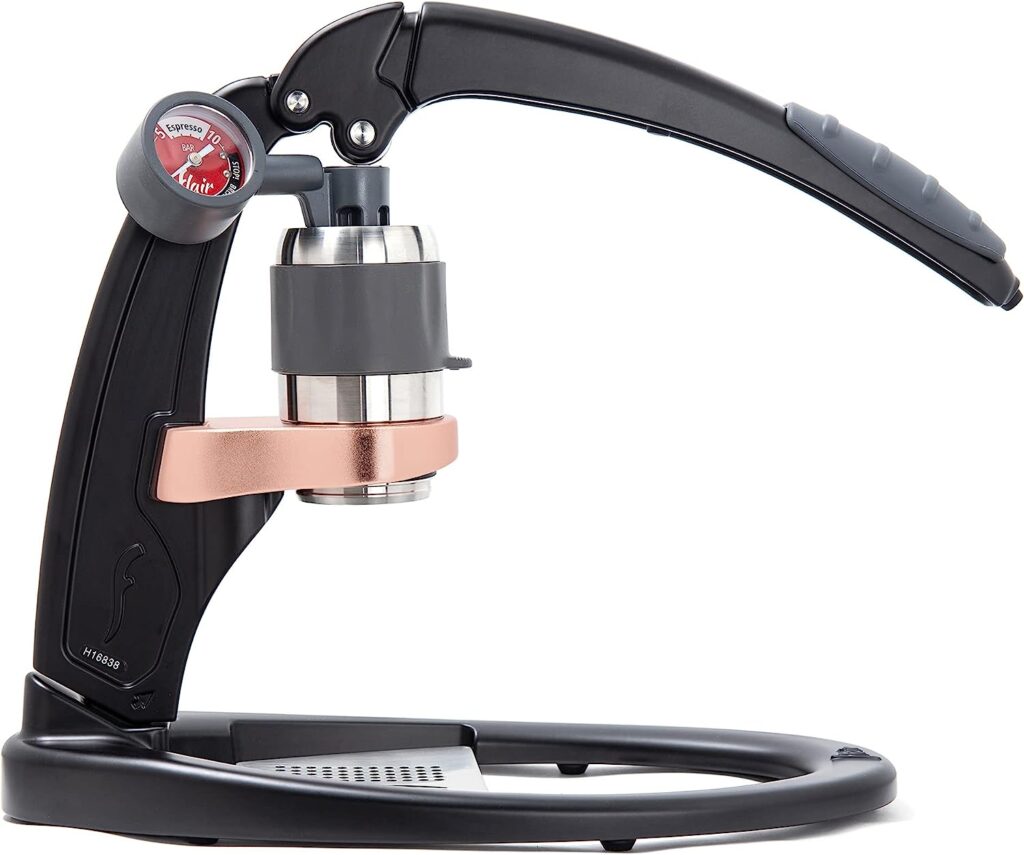
Compact and Portable Design
With its compact and portable design, the Flair PRO 2 Manual Espresso Maker is the perfect espresso machine to take on your outdoor adventures.
This sleek and lightweight espresso maker is specifically designed to be easily transported, allowing you to enjoy your favorite espresso wherever your explorations may take you. Its compact size ensures that it won’t take up much space in your backpack or camping gear, making it an ideal companion for any outdoor enthusiast.
The Flair PRO 2 Manual Espresso Maker’s portability doesn’t compromise on performance either. It’s equipped with high-quality components and features that deliver exceptional espresso shots, ensuring that you can savor the rich flavors and aromas of specialty coffee even in the great outdoors.
Precision Grinding With the Flair Royal Hand Grinder
To achieve the perfect grind size for your outdoor espresso brewing, we recommend using the Flair Royal Hand Grinder and carefully adjusting the settings to ensure precision and consistency. The grind size adjustment feature of the Flair Royal Hand Grinder allows you to have full control over the extraction process, maximizing the flavors and aromas in your espresso.
Here’s why the Flair Royal Hand Grinder is the ideal choice for precision grinding:
-
Consistent Grind: The grinder’s high-quality burrs ensure a uniform grind size, resulting in a balanced extraction and a rich, flavorful espresso.
-
Easy Adjustment: With its simple and intuitive grind size adjustment mechanism, you can easily switch between fine, medium, and coarse settings to match your desired brewing method.
-
Maximizing Extraction: By dialing in the grind size, you can optimize the extraction process, ensuring that the water extracts the desired flavors from the coffee grounds, resulting in a well-balanced and delicious cup of espresso.
The Flair Royal Hand Grinder is the perfect companion for outdoor espresso brewing, providing the precision necessary to create a truly exceptional coffee experience.

Using Specialty Coffee for Optimal Flavor
For the best flavor experience, we recommend brewing your outdoor espresso with specialty coffee. Specialty coffee beans are carefully selected and roasted to bring out the unique flavors and characteristics of each variety. When choosing the right beans for your outdoor brewing, consider factors such as origin, roast level, and flavor profile. Experiment with different varieties to find your preferred taste.
To further enhance the flavor of your outdoor espresso, it’s important to use brewing techniques that bring out the best in your chosen beans. Adjusting the grind size, water temperature, and extraction time can all impact your espresso’s flavor profile.
Try using a coarser grind and a higher water temperature for a bright and fruity espresso. For a more balanced and chocolaty flavor, opt for a finer grind and a slightly lower water temperature.
Table: Brewing Techniques for Different Flavors
Flavor Profile Grind Size Water Temperature Bright and Fruity Coarser Higher Balanced and Chocolaty Finer Slightly Lower
Reliable Water Heating System for Quick Boiling
We rely on a portable and efficient water heating system, like the JetBoil Flash, to quickly boil water for our outdoor espresso brewing. When it comes to brewing espresso in the great outdoors, having a reliable water heating system is crucial. Here’s why the JetBoil Flash is our go-to choice:
-
Speed: With its powerful burner, the JetBoil Flash can bring water to a rolling boil in just a matter of minutes. This means we can enjoy our espresso without any unnecessary waiting around.
-
Convenience: The JetBoil Flash is compact and lightweight, making it easy to transport and set up wherever we go. Its simple and intuitive design allows for effortless operation, even in the most remote locations.
-
Versatility: While the JetBoil Flash excels at boiling water, it also offers alternative heating options, such as simmering and frying. This versatility allows us to expand our outdoor cooking options beyond espresso, making it a valuable addition to our camping gear.
With the JetBoil Flash by our side, we can confidently brew our espresso in the great outdoors, knowing that we’ve a reliable and efficient water heating system at our disposal.

Embrace Your Inner Barista in the Great Outdoors
As coffee enthusiasts, experiencing the great outdoors allows us to embrace our inner barista and connect with the art of brewing espresso. There’s something truly magical about being surrounded by nature, with the soothing sounds of birds chirping and the gentle breeze caressing our faces, as we prepare our favorite cup of coffee.
It’s a moment of tranquility and connection with the world around us. Mindful coffee brewing in the outdoors allows us to fully appreciate the process, from weighing and pre-dosing the coffee beans to carefully adjusting the grind size. We can take our time, savoring the aroma and flavors, while immersing ourselves in the beauty of our surroundings.
It’s a chance to create lasting memories and indulge in the simple pleasures of life. So, let’s grab our equipment, find a serene spot, and let nature inspire our inner barista.
Frequently Asked Questions
Can I Use a Different Manual Espresso Maker for Outdoor Brewing?
Yes, you can use a different manual espresso maker for outdoor brewing. There are many portable espresso makers for camping that offer the convenience and quality you need to enjoy a delicious espresso in the great outdoors.

How Do I Determine the Ideal Grind Size for My Outdoor Espresso Brewing?
To determine the ideal grind size for outdoor espresso brewing, we carefully adjust the grind while considering the desired brew time. This ensures a rich and flavorful cup of espresso that perfectly captures the essence of the outdoors.
Are There Any Specific Types of Specialty Coffee That Work Best for Outdoor Espresso Brewing?
The best coffee beans for outdoor brewing techniques should be specialty beans from reputable local roasters. They offer optimal flavors that enhance the outdoor espresso experience, creating a truly indulgent and memorable moment.
Can I Use a Different Water Heating System Instead of the Jetboil Flash?
Yes, there are alternative water heating systems you can use instead of the Jetboil Flash. We have found success with other portable options like the MSR PocketRocket or the Primus Lite+.
What Are Some Additional Ways to Minimize My Impact on the Environment While Brewing Espresso Outdoors?
To minimize our impact on the environment while brewing espresso outdoors, we can prioritize eco-friendly coffee bean sourcing and opt for sustainable packaging options. It’s important to make conscious choices that align with our values and protect the planet we love.
Conclusion
As we bid farewell to the comforting routine of brewing espresso indoors, we embark on a thrilling journey of becoming outdoor baristas.
With the Flair PRO 2 Manual Espresso Maker as our trusty companion, we unlock a world of rich flavors and breathtaking views.
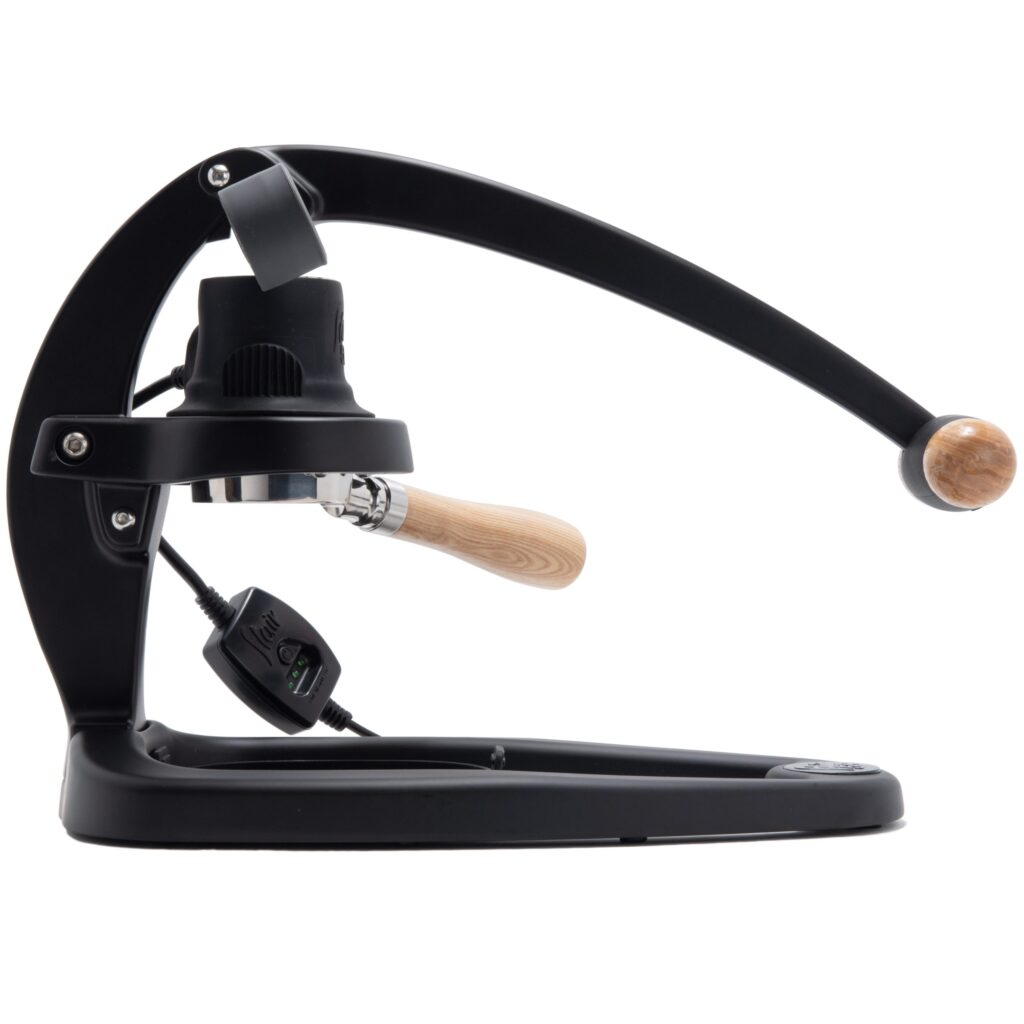
Let nature’s serenity and specialty coffee’s aroma awaken your senses and ignite your passion for the art of outdoor brewing.
So, grab your gear, embrace your inner barista, and let’s make memories in the great outdoors!
In the vast and diverse world of coffee, coffee alternatives, and tea, Olivia has found her calling. As an author and a dedicated coffee and tea aficionado, her work for Cappuccino Oracle reflects her profound love and understanding of the intricate complexities found within these beverages. Olivia’s passion for the subject serves as both a catalyst for her creativity and a connection point with her audience.
Olivia’s appreciation for coffee, coffee alternatives, and tea blossomed at an early age. She discovered that these beverages invigorated her senses and stimulated her creative spirit. From the nuanced flavors of single-origin roasts to the captivating narratives intertwined with coffee, coffee alternatives, and tea trade and culture, Olivia found an unlimited source of inspiration in her daily cup.
Her love for these beverages and her talent for storytelling eventually converged at Cappuccino Oracle. As an author, Olivia’s mission is to illuminate the intricate tapestry that makes up the world of coffee, coffee alternatives, and tea. Her articles span a diverse range of topics, encompassing everything from the unique flavors of different brews to the sociocultural history intertwined with their cultivation and consumption.
Espresso
Mochaccino – What Is It and How Do You Make It at Home
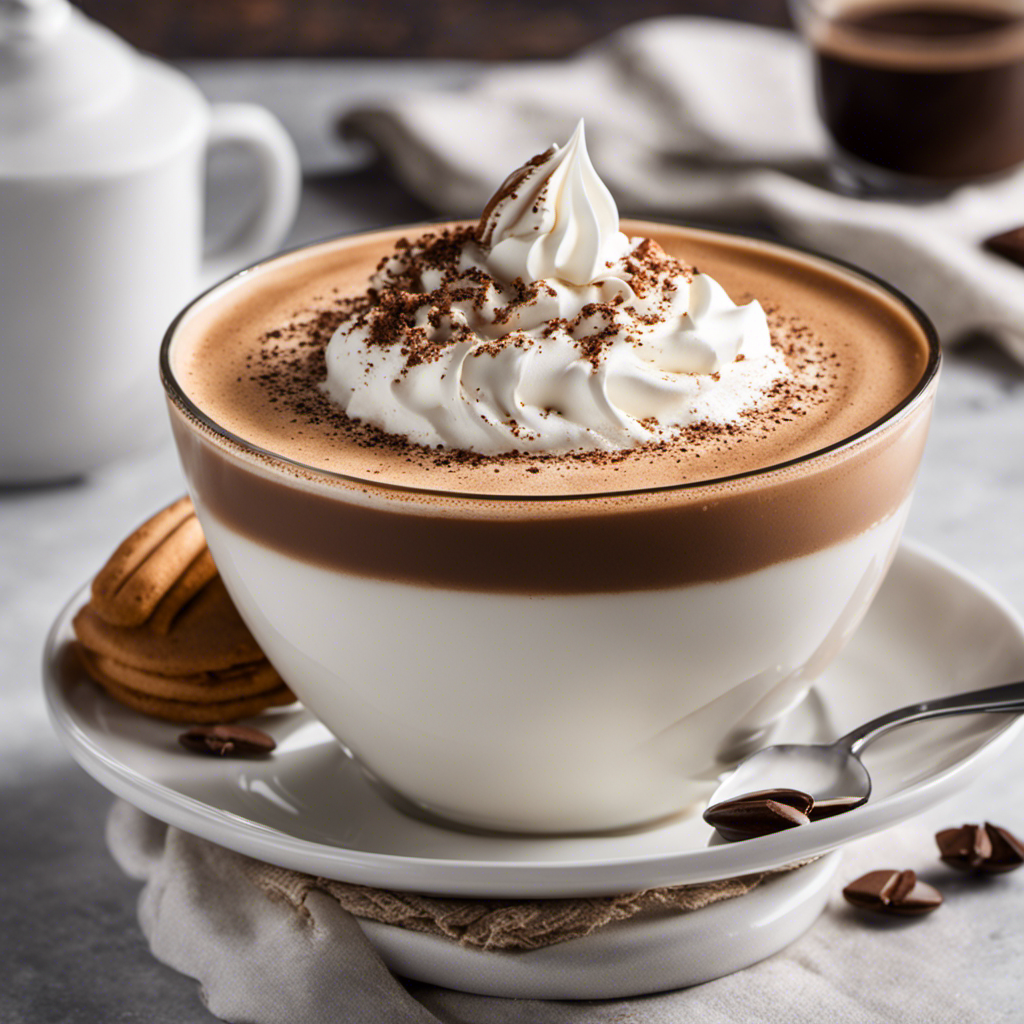
Have you ever pondered what makes a mochaccino so irresistibly delicious? Let me share with you that it’s the impeccable combination of bold espresso, creamy chocolate, and frothy milk.
And the best part? You can easily make this indulgent treat right in the comfort of your own home. In this article, I’ll guide you through the history, ingredients, and step-by-step process of creating the perfect homemade mochaccino.
Get ready to impress your taste buds and become your very own barista!
Key Takeaways
- The mochaccino originated in Italy in the 17th century as a combination of espresso and hot chocolate.
- The flavors of the mochaccino have evolved over time, with variations including caramel, vanilla, and peppermint.
- The cultural significance of the mochaccino varies in different countries.
- To make a homemade mochaccino, you will need strong brewed coffee, cocoa powder, milk, sugar, and whipped cream for topping.
History of the Mochaccino
I’ve read about the history of the mochaccino, and it’s fascinating how this delightful drink has evolved over the years.
The mochaccino, also known as a mocha, originated in Italy in the 17th century. It started as a combination of espresso and hot chocolate, creating a rich and indulgent beverage.
As time went on, the flavors of the mochaccino began to evolve. Today, you can find variations with added flavors like caramel, vanilla, or even peppermint.
In different countries, the cultural significance of the mochaccino varies. In Italy, it’s a staple in their coffee culture, while in the United States, it has become a popular choice among coffee enthusiasts.
The mochaccino has truly become a global favorite, adapting to different tastes and preferences around the world.
Ingredients for a Homemade Mochaccino
I can make a delicious homemade mochaccino with just a few simple ingredients and a little bit of time.
The key to a perfect mochaccino is combining the rich flavors of coffee and chocolate. For this, you’ll need strong brewed coffee, cocoa powder, milk, sugar, and whipped cream for topping.
To start, mix cocoa powder with a small amount of hot water to create a smooth paste. Then, heat milk on the stovetop until hot but not boiling. Add the cocoa paste and sugar to the milk, stirring until dissolved.
Next, pour the coffee into a mug and slowly pour the milk mixture over it. Finally, finish with a dollop of whipped cream. It’s a delightful treat that combines the best of both worlds – coffee and chocolate.
And if you’re looking for coffee alternatives or health benefits, a homemade mochaccino is a perfect choice.
Step-by-Step Guide to Making a Mochaccino at Home
With just a few simple steps and some common ingredients, you can easily make a delicious mochaccino at home. Here’s how:
-
Start by brewing a strong cup of coffee using your preferred method. You can use a traditional drip coffee maker, a French press, or even try alternative brewing methods like pour-over or cold brew for a unique flavor profile.
-
While your coffee is brewing, warm up some milk on the stove or in the microwave. You can use any type of milk you prefer, such as dairy milk, almond milk, or oat milk.
-
Once your coffee is ready, pour it into a mug and add a tablespoon or two of cocoa powder. Mix until the cocoa powder is fully dissolved.
-
Finally, pour the warm milk into the mug and stir well. You can also top it off with some whipped cream or chocolate shavings for an extra indulgent touch.
Making your own mochaccino at home not only allows you to control the quality of ingredients but also offers health benefits. The coffee provides a boost of energy and can improve cognitive function, while cocoa powder is rich in antioxidants and can boost mood. Additionally, using alternative milk options can cater to dietary preferences or restrictions.
Variations and Additions to the Classic Mochaccino Recipe
There are many ways to elevate the classic mochaccino recipe, such as adding a dash of cinnamon or a drizzle of caramel syrup for a hint of sweetness. But have you ever considered exploring different types of mochaccinos for their unique flavors and health benefits? Let’s take a look at some interesting variations:
| Type | Flavor Profile | Health Benefits |
|---|---|---|
| Matcha Mochaccino | Earthy and Creamy | High in antioxidants |
| Coconut Mochaccino | Rich and Nutty | Boosts metabolism |
| Protein Mochaccino | Creamy and Filling | Provides muscle recovery |
These different types of mochaccinos not only offer a diverse range of flavors but also come with their own set of health benefits. Now that we’ve explored the possibilities, let’s move on to some tips and tricks for perfecting your homemade mochaccino.
Tips and Tricks for Perfecting Your Homemade Mochaccino
To achieve the perfect homemade mochaccino, don’t forget to froth the milk until it reaches a creamy consistency. Frothing the milk adds that luxurious touch to your drink, creating a velvety texture that perfectly complements the rich flavors of chocolate and espresso.
Here are some tips and tricks to help you perfect your homemade mochaccino:
-
Use high-quality coffee beans: The best coffee beans for a mochaccino are those with a bold flavor profile. Look for beans with a rich, chocolaty undertone to enhance the chocolate flavor in your drink.
-
Experiment with homemade coffee alternatives: If you’re looking to switch things up, try using alternative coffee options like cold brew or espresso powder. These can add a unique twist to your mochaccino.
-
Adjust the sweetness: Mochaccinos are typically sweet, but you can adjust the sweetness to your preference. Add more or less chocolate syrup or sweetener to achieve the perfect balance for your taste buds.
-
Get creative with toppings: Don’t forget the finishing touches! Whipped cream, chocolate shavings, or a sprinkle of cinnamon can elevate the presentation and add an extra layer of flavor to your homemade mochaccino.
Frequently Asked Questions
Can I Use Regular Coffee Instead of Espresso in a Homemade Mochaccino?
Yes, you can use regular coffee instead of espresso in a homemade mochaccino. However, using espresso will give your drink a stronger and richer flavor, which is one of the benefits of using it.
How Many Calories Are in a Homemade Mochaccino?
I made a homemade mochaccino with whole milk and dark chocolate syrup. It has around 200 calories, but the nutritional value may vary depending on the ingredients used.
Can I Use Almond Milk Instead of Cow’s Milk in a Homemade Mochaccino?
Yes, almond milk can be used as a dairy-free alternative in a homemade mochaccino. It provides a creamy texture and a nutty flavor that complements the coffee and chocolate.
What Type of Cocoa Powder Is Best for Making a Mochaccino at Home?
When making a mochaccino at home, it’s important to choose the best cocoa powder. Look for high-quality brands, like Ghirardelli or Valrhona, for a rich and delicious flavor. Don’t forget to consider alternative milk options, like almond milk, for a dairy-free version.
Can I Make a Mochaccino Without a Milk Frother?
Sure, you can make a mochaccino without a milk frother. There are alternative methods like using a whisk or a handheld frother. These frothing techniques will give you a similar creamy texture.
Conclusion
In conclusion, the mochaccino is a beloved coffee beverage that combines the rich flavors of chocolate and espresso.
By following the step-by-step guide and using high-quality ingredients, you can easily make a delicious mochaccino at home.
Don’t be afraid to get creative with variations and additions to suit your taste.
With a little practice and a few tips and tricks, you’ll be able to perfect your homemade mochaccino and enjoy this indulgent treat whenever you like.
Justin is a seasoned author, coffee and tea enthusiast, and an essential member of the Cappuccino Oracle team. With a keen appreciation for the complexities of coffee, coffee alternatives, and tea, Justin has dedicated his professional career to exploring these realms and sharing his insights with readers worldwide.
Justin’s immersion in the world of coffee, coffee alternatives, and tea began at a young age, kindling a passion that extended beyond mere consumption. This love for these beverages led him to combine his talent for writing with his devotion to coffee and tea, bringing him to Cappuccino Oracle as a dedicated author.
Espresso
Iced Macchiato – What Is It and How to Make It at Home
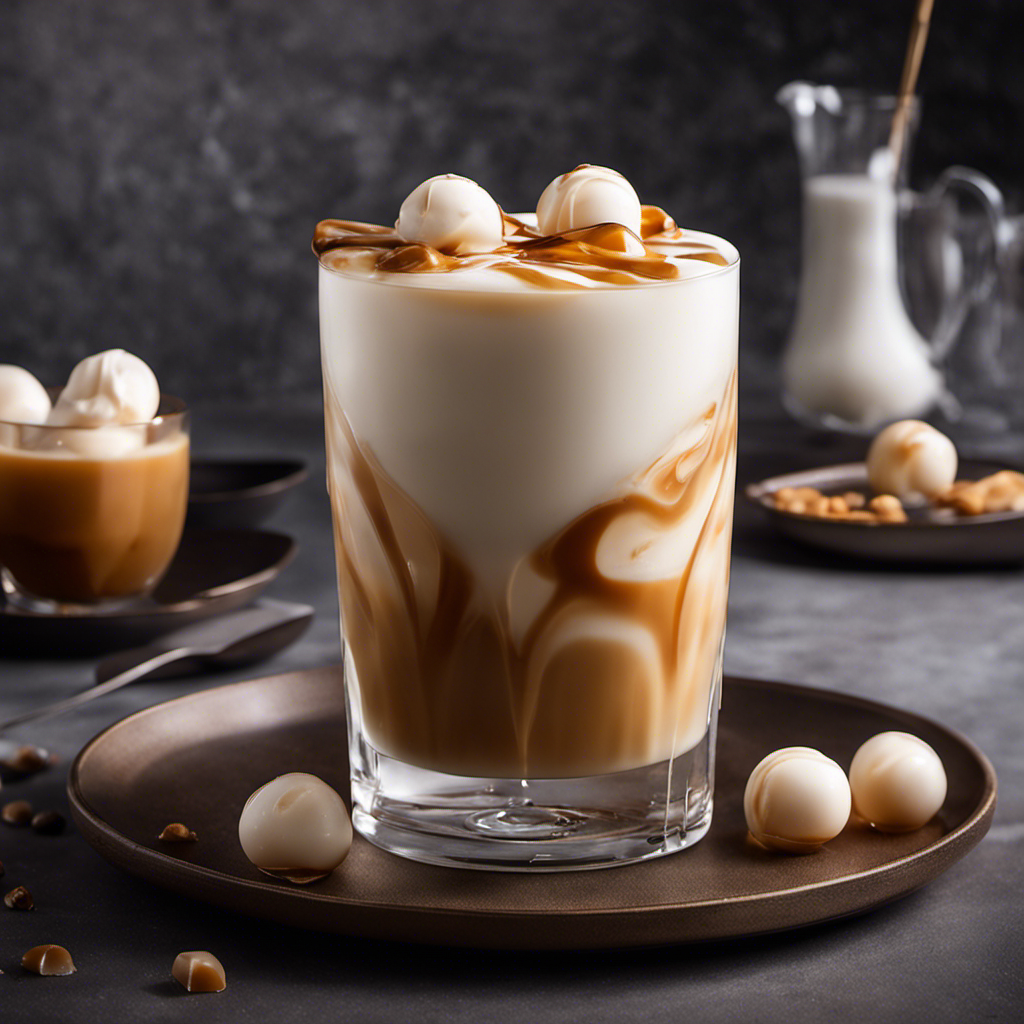
I enjoy a delicious iced macchiato on a warm summer day. Were you aware that it’s surprisingly simple to prepare at home? With just a few basic ingredients and some knowledge, you can savor this invigorating coffee drink whenever you desire.
In this article, I’ll share with you the secrets to making the perfect iced macchiato, from brewing the espresso to frothing the milk.
So grab your favorite mug and let’s get started!
Key Takeaways
- Iced macchiato originated in Italy as a variation of traditional macchiato.
- The base ingredients of an iced macchiato are espresso, milk, sweetener (optional), and ice.
- Brewing espresso for an iced macchiato requires precision and consideration of factors like grind size, brewing time, and water temperature.
- Frothing milk for an iced macchiato involves using techniques like using cold milk, alternative milk options, and a steam wand or frother.
The Origins of Iced Macchiato
I’ve always been curious about the origins of the iced macchiato. This popular coffee beverage has its roots in Italy, where the term ‘macchiato’ means ‘stained’ or ‘marked.’ Traditionally, a macchiato is made by adding a small amount of espresso to a cup and then ‘staining’ it with a dollop of frothed milk.
The iced macchiato, however, is a variation that emerged in recent years. It’s made by pouring espresso over a glass filled with ice and then adding a small amount of milk or milk foam. The result is a refreshing and flavorful drink, perfect for hot summer days.
Nowadays, there are many variations of the iced macchiato, with different flavors and toppings added to enhance the taste. From caramel to vanilla to chocolate, there’s an iced macchiato for every coffee lover’s preference.
Understanding the Ingredients
Understanding the ingredients is essential for making a delicious iced macchiato at home. When it comes to flavor profiles, the combination of sweet and bitter is what makes an iced macchiato so enticing. Here are some key ingredients to consider:
- Espresso: The base of an iced macchiato, providing a strong and rich flavor.
- Milk: Adds creaminess and balances out the espresso’s intensity.
- Sweetener: Optional, but commonly used to enhance the overall taste.
- Ice: Keeps the drink refreshing and cold.
- Optional flavorings: Vanilla, caramel, or chocolate syrups can be added for extra flavor.
Understanding different brewing methods is also important. Whether you prefer using an espresso machine, a French press, or a moka pot, each method can influence the taste and strength of your iced macchiato. Experimenting with different brewing techniques and ratios will help you find the perfect balance of flavors for your homemade iced macchiato.
The Art of Brewing Espresso
Brewing espresso is an intricate process that requires precision and skill. To achieve the perfect cup, espresso brewing techniques and the importance of water temperature can’t be overlooked.
When it comes to espresso brewing techniques, there are various methods to choose from. Some popular ones include the classic manual espresso machine, the convenient pod-based system, and the modern espresso machine with advanced features. Each technique requires careful consideration of factors such as grind size, brewing time, and pressure.
However, one common factor that’s crucial in all techniques is water temperature. The ideal water temperature for brewing espresso is between 195°F and 205°F. This range ensures proper extraction of flavors and oils from the coffee grounds, resulting in a rich and balanced espresso shot.
Transitioning to the next section, after perfecting the espresso shot, the focus shifts to perfecting the milk froth.
Perfecting the Milk Froth
I absolutely love experimenting with different techniques to perfect the milk froth for my iced macchiatos. It’s an art form in itself, and getting that perfect creamy texture on top of my espresso is essential for a delicious drink.
When it comes to creating the perfect milk froth, there are a few things to consider. Here are some tips to help you explore alternative milk options and troubleshoot common frothing issues:
- Use cold milk: Starting with cold milk will help create a better froth.
- Choose the right milk: Experiment with different types of milk, such as almond, oat, or soy, to find the one that froths best for you.
- Froth the milk properly: Use a steam wand or a frother to create a creamy and velvety texture.
- Watch the temperature: Overheating the milk can result in a burnt taste, so make sure to stop frothing when the milk reaches around 150°F.
- Clean and maintain your equipment: Regularly clean your steam wand or frother to ensure optimal frothing performance.
By following these tips, you’ll be on your way to creating the perfect milk froth for your iced macchiatos, and exploring alternative milk options along the way.
Happy frothing!
Step-by-Step Guide to Making Iced Macchiato at Home
To make an iced macchiato at home, I followed a simple step-by-step guide using a shot of espresso, a splash of milk, and a drizzle of caramel syrup.
First, I brewed a strong shot of espresso and let it cool.
Then, I filled a glass with ice and poured the espresso over it.
Next, I added a splash of milk, using almond milk as an alternative option for a creamy and nutty flavor.
To enhance the taste, I drizzled caramel syrup over the top, giving it a sweet and indulgent twist.
The beauty of making an iced macchiato at home is that you can get creative with variations.
You can experiment with different types of milk, such as oat milk or coconut milk, to suit your preferences.
Additionally, you can add flavored syrups like vanilla or hazelnut to customize your macchiato even further.
Enjoy this refreshing and satisfying beverage right in the comfort of your own home.
Frequently Asked Questions
What Is the Nutritional Content of an Iced Macchiato?
The nutritional content of an iced macchiato depends on the ingredients used. It can provide benefits such as a boost of energy from caffeine, but may also have health concerns like added sugars or high calorie content.
Can I Use Any Type of Milk to Make an Iced Macchiato?
I can use any type of milk to make an iced macchiato. Options like almond, oat, or soy milk can be used as alternatives. Additionally, different types of sweeteners can enhance the flavor.
How Long Does It Take to Brew Espresso for an Iced Macchiato?
To brew espresso for an iced macchiato, I recommend using an espresso machine and grinding fresh coffee beans. It typically takes about 25-30 seconds to extract the espresso. Froth the milk using a frother or steam wand until it reaches a creamy consistency.
Can I Use a Regular Blender to Froth the Milk for an Iced Macchiato?
Yes, you can use a regular blender to froth the milk for an iced macchiato. It’s a convenient and cost-effective alternative. You can also explore different milk options like almond, oat, or soy for a unique twist.
Can I Customize the Flavor of an Iced Macchiato by Adding Syrups or Toppings?
Yes, you can customize the flavor of an iced macchiato by adding syrups or toppings. It’s a great way to experiment with different milk alternatives and create your own unique and delicious drink.
Conclusion
In conclusion, making an iced macchiato at home is a simple process that can be mastered with practice. By understanding the origins of this popular drink, familiarizing oneself with the ingredients, and perfecting the art of brewing espresso and frothing milk, anyone can enjoy a delicious iced macchiato from the comfort of their own home.
Fun fact: Did you know that iced macchiatos are the most popular coffee choice among millennials, accounting for 40% of their coffee orders?
Noah, the Editor-in-Chief at Cappuccino Oracle, plays a pivotal role in shaping the voice and vision of our renowned platform. With an unwavering passion for coffee, coffee alternatives, and tea, Noah leads Cappuccino Oracle towards new horizons in the realm of coffee journalism.
Beyond his professional responsibilities, Noah serves as a mentor and guiding force for his team. His dedication to journalistic excellence and genuine love for coffee, coffee alternatives, and tea continue to inspire and motivate the Cappuccino Oracle family. In the ever-evolving world of these beverages, Noah’s leadership ensures that our platform remains at the forefront, delivering enlightening and enjoyable content to our readers worldwide.
-

 Coffee Basics3 days ago
Coffee Basics3 days agoThe Ultimate Guide To Buying Nespresso Pods: Where And How?
-

 Coffee Basics6 days ago
Coffee Basics6 days ago11 Best Medium Roast Coffees For Your Perfect Cup
-

 Coffee Basics6 days ago
Coffee Basics6 days agoStarbucks Venti Drinks: Customization And Pricing Guide
-

 Coffee Basics2 days ago
Coffee Basics2 days agoPerfect Your Espresso With Puck Screens: A Barista’s Secret
-

 Coffee Basics5 days ago
Coffee Basics5 days agoWhat Is Half-Caff Coffee? (And How Much Caffeine Is In It?)
-

 Coffee Basics5 days ago
Coffee Basics5 days ago9 Best Ground Coffee Brands For Your Perfect Cup
-

 Coffee Basics6 days ago
Coffee Basics6 days agoCan You Froth Oat Milk? Yes, And Here Are Six Ways To Do So
-
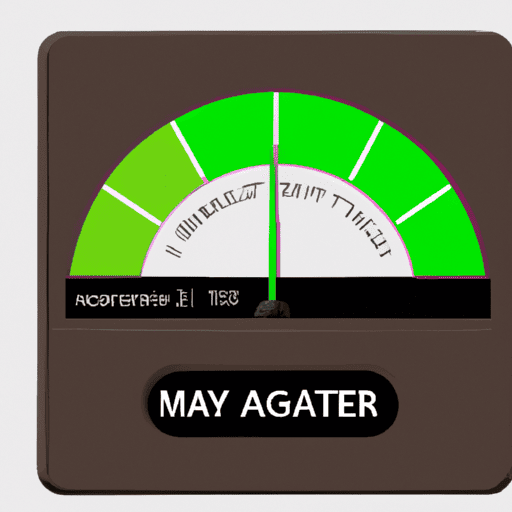
 Coffee Basics6 days ago
Coffee Basics6 days agoMaximizing Efficiency: Coffee Maker Wattage Guide





























